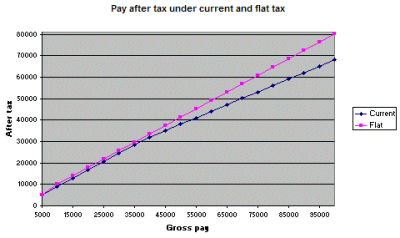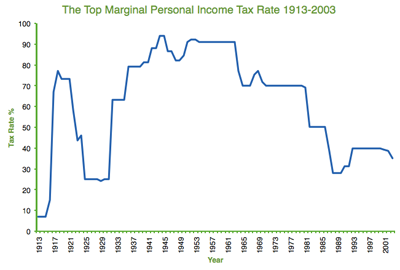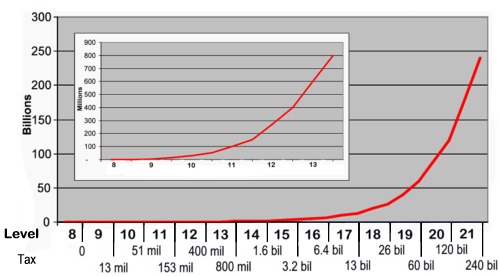A tax may be defined as a "pecuniary burden laid upon individuals or property owners to support the government [...] a payment exacted by legislative authority." A tax "is not a voluntary payment or donation, but an enforced contribution, exacted pursuant to legislative authority" and is "any contribution imposed by government [...] whether under the name of toll, tribute, tallage, gabel, impost, duty, custom, excise, subsidy, aid, supply, or other name."
In modern taxation systems, taxes are levied in money; but, in-kind and corvée taxation are characteristic of traditional or pre-capitalist states and their functional equivalents. The method of taxation and the government expenditure of taxes raised is often highly debated in politics and economics. Tax collection is performed by a government agency such as Canada Revenue Agency, the Internal Revenue Service (IRS) in the United States, or Her Majesty's Revenue and Customs (HMRC) in the UK. When taxes are not fully paid, civil penalties (such as fines or forfeiture) or criminal penalties (such as incarceration) may be imposed on the non-paying entity or individual.
Taxes are most often levied as a percentage, called the tax rate. An important distinction when talking about tax rates is to distinguish between the marginal rate and the effective (average) rate. The effective rate is the total tax paid divided by the total amount the tax is paid on, while the marginal rate is the rate paid on the next dollar of income earned. For example, if income is taxed on a formula of 5% from $0 up to $50,000, 10% from $50,000 to $100,000, and 15% over $100,000, a taxpayer with income of $175,000 would pay a total of $18,750 in taxes.
Money provided by taxation has been used by states and their functional equivalents throughout history to carry out many functions. Some of these include expenditures on war, the enforcement of law and public order, protection of property, economic infrastructure (roads, legal tender, enforcement of contracts, etc.), public works, social engineering, and the operation of government itself. Governments also use taxes to fund welfare and public services. A portion of taxes also go to pay off the state's debt and the interest this debt accumulates. These services can include education systems, health care systems, pensions for the elderly, unemployment benefits, and public transportation. Energy, water and waste management systems are also common public utilities. Colonial and modernizing states have also used cash taxes to draw or force reluctant subsistence producers into cash economies.
Governments use different kinds of taxes and vary the tax rates. This is done to distribute the tax burden among individuals or classes of the population involved in taxable activities, such as business, or to redistribute resources between individuals or classes in the population. Historically, the nobility were supported by taxes on the poor; modern social security systems are intended to support the poor, the disabled, or the retired by taxes on those who are still working. In addition, taxes are applied to fund foreign aid and military ventures, to influence the macroeconomic performance of the economy (the government's strategy for doing this is called its fiscal policy; see also tax exemption), or to modify patterns of consumption or employment within an economy, by making some classes of transaction more or less attractive.
A nation's tax system is often a reflection of its communal values or/and the values of those in power. To create a system of taxation, a nation must make choices regarding the distribution of the tax burden—who will pay taxes and how much they will pay—and how the taxes collected will be spent. In democratic nations where the public elects those in charge of establishing the tax system, these choices reflect the type of community that the public and/or government wishes to create. In countries where the public does not have a significant amount of influence over the system of taxation, that system may be more of a reflection on the values of those in power.
All large businesses incur administrative costs in the process of delivering revenue collected from customers to the suppliers of the goods or services being purchased. Taxation is no different, the resource collected from the public through taxation is always greater than the amount which can be used by the government. The difference is called compliance cost, and includes for example the labour cost and other expenses incurred in complying with tax laws and rules. The collection of a tax in order to spend it on a specified purpose, for example collecting a tax on alcohol to pay directly for alcoholism rehabilitation centres, is called hypothecation. This practice is often disliked by finance ministers, since it reduces their freedom of action. Some economic theorists consider the concept to be intellectually dishonest since, in reality, money is fungible. Furthermore, it often happens that taxes or excises initially levied to fund some specific government programs are then later diverted to the government general fund. In some cases, such taxes are collected in fundamentally inefficient ways, for example highway tolls. Some economists, especially neo-classical economists, argue that all taxation creates market distortion and results in economic inefficiency. They have therefore sought to identify the kind of tax system that would minimize this distortion. Since governments also resolve commercial disputes, especially in countries with common law, similar arguments are sometimes used to justify a sales tax or value added tax. Others (e.g. libertarians) argue that most or all forms of taxes are immoral due to their involuntary (and therefore eventually coercive/violent) nature. The most extreme anti-tax view is anarcho-capitalism, in which the provision of all social services should be voluntarily bought by the person(s) using them.
In modern taxation systems, taxes are levied in money; but, in-kind and corvée taxation are characteristic of traditional or pre-capitalist states and their functional equivalents. The method of taxation and the government expenditure of taxes raised is often highly debated in politics and economics. Tax collection is performed by a government agency such as Canada Revenue Agency, the Internal Revenue Service (IRS) in the United States, or Her Majesty's Revenue and Customs (HMRC) in the UK. When taxes are not fully paid, civil penalties (such as fines or forfeiture) or criminal penalties (such as incarceration) may be imposed on the non-paying entity or individual.
Taxes are most often levied as a percentage, called the tax rate. An important distinction when talking about tax rates is to distinguish between the marginal rate and the effective (average) rate. The effective rate is the total tax paid divided by the total amount the tax is paid on, while the marginal rate is the rate paid on the next dollar of income earned. For example, if income is taxed on a formula of 5% from $0 up to $50,000, 10% from $50,000 to $100,000, and 15% over $100,000, a taxpayer with income of $175,000 would pay a total of $18,750 in taxes.
 Note that the flat tax rate |  Graph: A Flat Tax Credit Means |  \x26#39;Commodity taxes\x26#39; include such |  and is the flat tax rate. |  graph of a linear fit to tax |
 Graph of flat tax and current |  of a \x26quot;flat tax\x26quot; – a simple |  a very high tax rate (e.g. |  were to employ a flat tax, |  This is the post tax graph when we apply a flat tax. |
A nation's tax system is often a reflection of its communal values or/and the values of those in power. To create a system of taxation, a nation must make choices regarding the distribution of the tax burden—who will pay taxes and how much they will pay—and how the taxes collected will be spent. In democratic nations where the public elects those in charge of establishing the tax system, these choices reflect the type of community that the public and/or government wishes to create. In countries where the public does not have a significant amount of influence over the system of taxation, that system may be more of a reflection on the values of those in power.
 A Flat Tax Recipe for Disaster |  Federal Income Taxes Pay |  tax graph I\x26#39;ll post today. |  This is a flat tax, | A graph of change in tax rate |
 The part of the graph where |  Tax Day post #2: As Senate | A graph of change in tax rate |  I am against a flat tax and a progressive tax. |  a flat tax, |
No comments:
Post a Comment